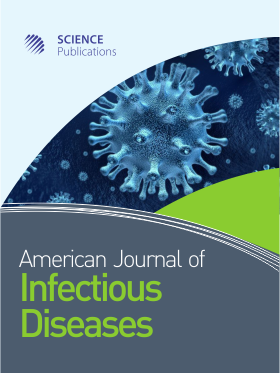Urine Turbidity and Microhaematuria as Rapid Assessment Indicators for Schistosoma haematobium Infection among School Children in Endemic Areas
- 1 University of Ibadan, Nigeria
Abstract
Problem statement: Urinary schistosomiasis is highly endemic in Nigeria and for effective control measure, an efficient, quick and yet cheap diagnosis should be integrated. This will ensure the proper management of infection due to Schistosoma haematobium in low resource communities of Nigeria. Approach: This cross-sectional study recruited a total of 456 (252 males, 204 females) school children aged 3-20 years between November 2010 and June 2011. Urine samples were examined macroscopically for turbidity and subsequently screened for microhaematuria using diagnostic reagent strips. The microscopic examination of urine samples for schistosome eggs was used as the standard for diagnosis. Results: The prevalence of S. haematobium and geometric mean intensity of infection were 54.8% and 13.9 ± 0.67 eggs/10 mL of urine respectively. The age and sex prevalence of urinary schistosomiasis showed no significant differences (p>0.05). The prevalences of urine turbidity and microhaematuria were 37.1 and 53.9% respectively and these varied significantly across age groups (p<0.05). The sensitivities of urine turbidity and microhaematuria used for the indirect diagnosis of urinary schistosomiasis were 54.8 and 59.3 (p>0.05) with their corresponding specificities 80.2 and 65.8% respectively. Intensity of infection was significantly correlated with the indirect diagnostic methods, urine turbidity (r = 0.203, p<0.01) and microhaematuria (r = 0.487, p<0.01). Conclusion: The possible use of urine turbidity as an indicator for rapid diagnosis of urinary schistosomiasis in low resource communities is implied.
DOI: https://doi.org/10.3844/ajidsp.2012.60.64

- 6,217 Views
- 4,689 Downloads
- 12 Citations
Download
Keywords
- Urinary schistosomiasis
- urine turbidity
- microhaematuria
- prevalence
- indirect diagnosis
